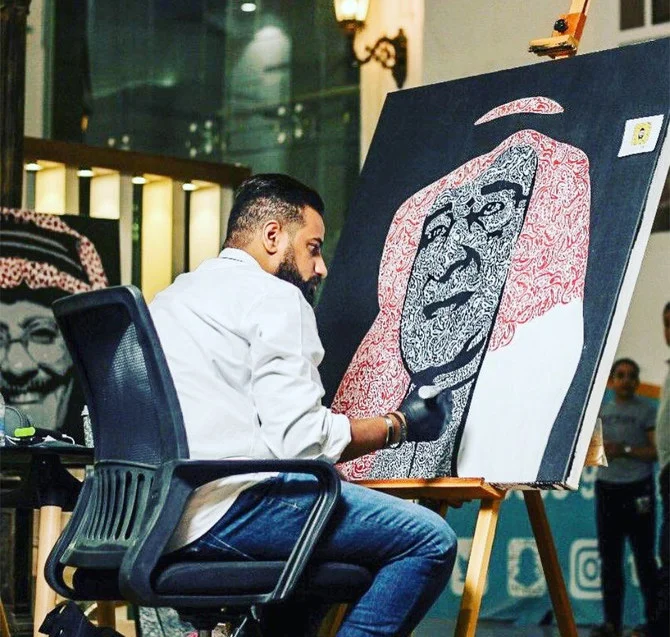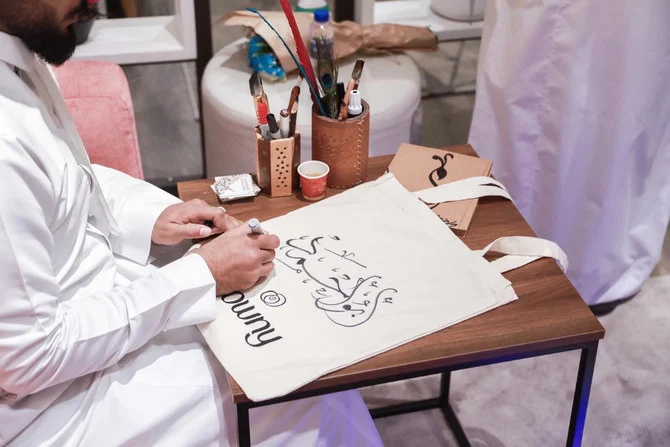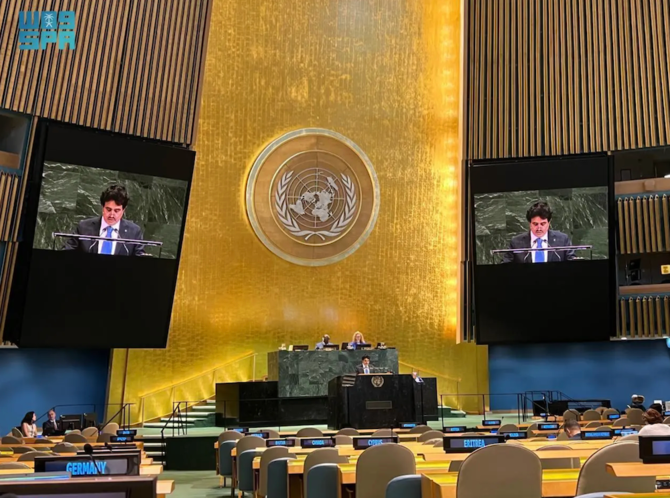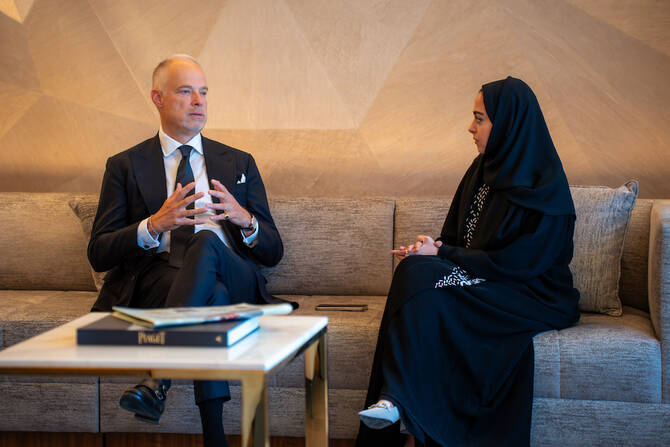Ameera Abid
JEDDAH: Calligraphy is an ancient art form practiced for thousands of years, and even today, people continue to employ the medium, which has evolved from merely an aesthetically-pleasing way to transmit the Arabic language, to express their own creativity.
Every artist who practices calligraphy adds something original. One of them is Saudi national Mohammed Bajubair, a 34-year-old calligrapher who has been taking Arabic poems and transcribing them in a way that creates portraits of people.
Typographic art, where words are written to create images, is well suited to the twisting, beautifying and bending of Arabic letters in a way that flows together.
Bajubair’s work is mind-bending, and breathtakingly beautiful. From a distance, it looks like accurate portraiture — most famously of members of the Kingdom’s royals — but upon closer inspection, the words become clearer.
“The phrases, words, and poems I use are related to the person I am drawing. There is always a connection between the text I use and the person I have decided to portray,” said Bajubair, explaining how his work brings art and literature together.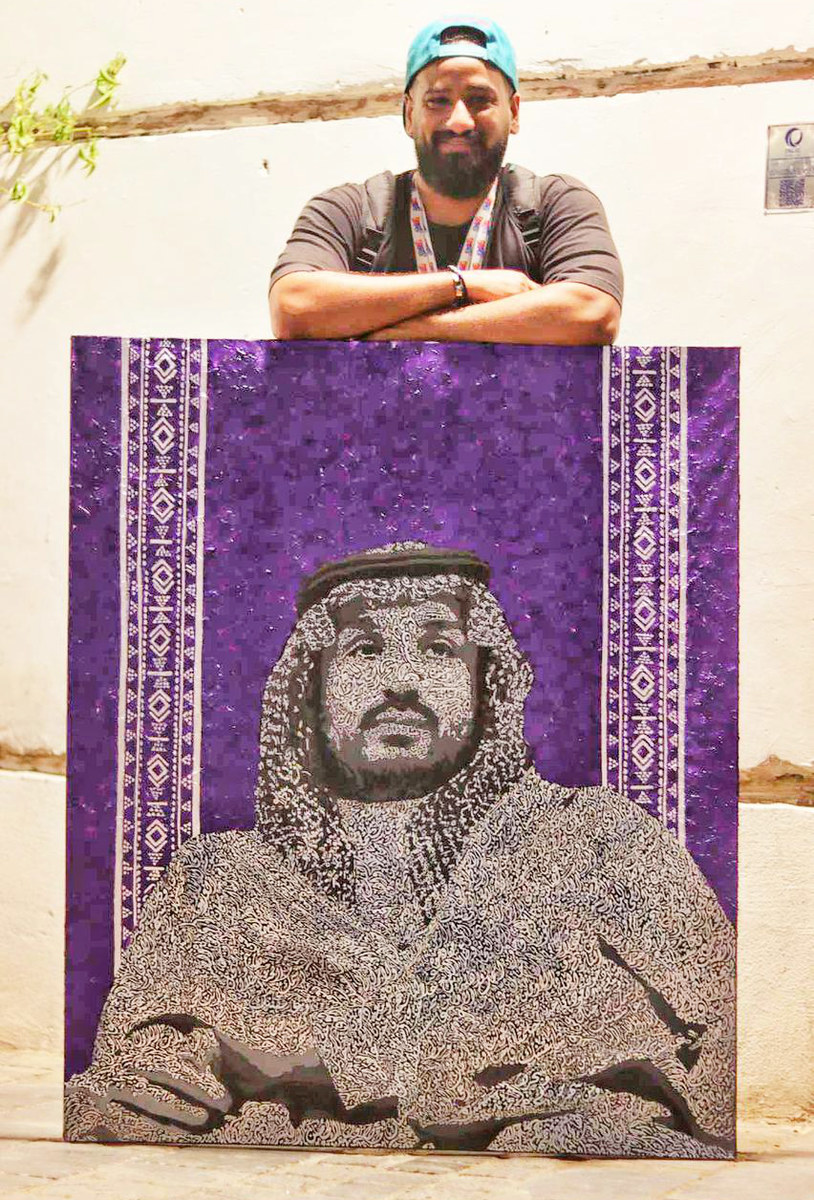
He said he discovered this style of drawing “after learning calligraphy properly. I decided to apply the rules of typography to calligraphy and started arranging the calligraphy in a way that looked like realistic portraits. I developed it in my way so I can be distinguished among artists.”
Bajubair said standing out from a crowd of very creative people was his wish, to reach enough people with his artwork and leave a positive imprint for future generations.
The phrases, words, and poems I use are related to the person I am drawing. There is always a connection between the text I use and the person I have decided to portray.
Mohammed Bajubair
There are three great calligraphers who usually define the golden age of Arabic calligraphy: Ibn Muqla (886-940 AD), who is known as the inventor of the Thuluth style of calligraphy; Ibn Al-Buwwab (961-1022) who worked with the round script of the Arabic language, and Yakut Al-Musta’simi of Amasya (who died in 1298) who refined the six styles of Arabic calligraphy.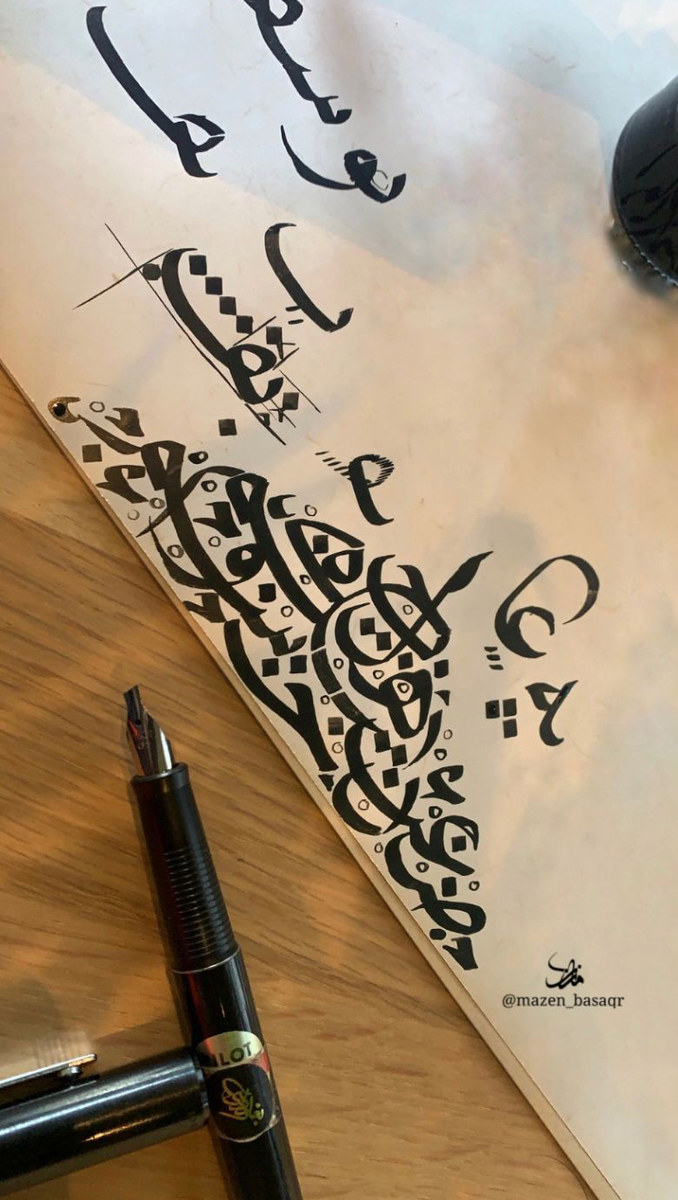
The six major Arabic calligraphy styles are Thuluth, Nesish, Muhakkak, Reyhami, Teuki, and Rika.
Mazen Basaqer, a calligrapher, defines the form as “like my sanctuary.”
He said that being such a big part of history makes calligraphy a sacred art. Still, to make it his own, he said he practiced the original rules first. “Once I had command over the calligraphy, and I was sure I understood the rules, I started to develop into my style.”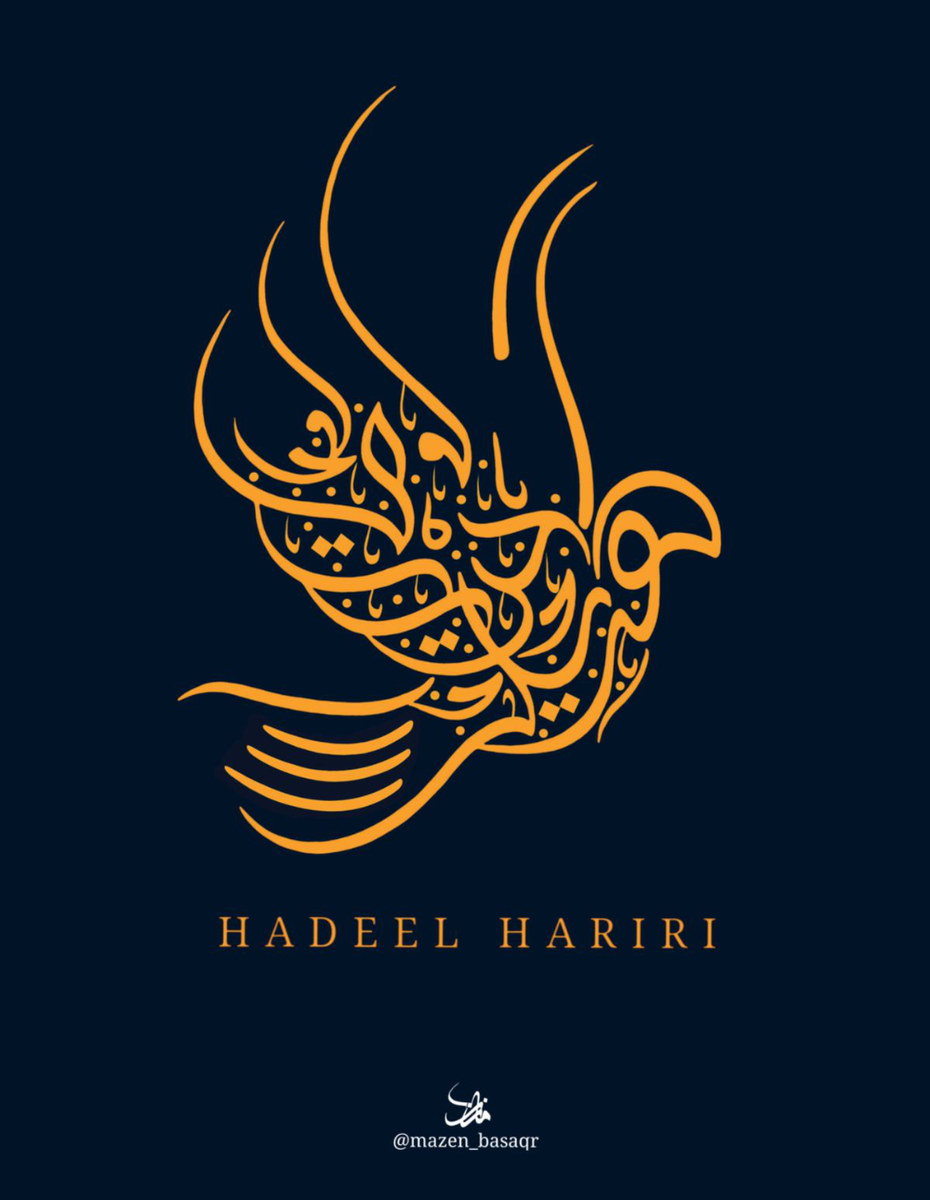
Basaqer has used all kinds of mediums for his calligraphy, from painting murals on big walls to tote bags to carving perfume bottles; he has managed to beautify everything, taking an object and making it a priceless piece of art.
He said that calligraphy has also gone from the physical world to social media, and this way, Arabs can reconnect with their ancient art, and people unacquainted with it can discover it.
“The art of Arabic calligraphy is not (just) an ancient art (but is) present in our current lives at all times. The period we live in can also be considered a golden time because I can reach my audience with just one touch,” said Basaqer.



